Topic Question Set
Q 1
:
In a certain camera, a combination of four similar thin convex lenses are arranged axially in contact. Then the power of the combination and the total magnification in comparison to the power () and magnification () for each lens will be, respectively [2025]
and
and
and
and
(1)
For thin lenses in contact, then the powers of each lens add up.
Given linear magnification of each lens is
The overall magnification of the combined lens system is
Hence the combination has power 4P and magnification .
4P and -- follows from the additive power law for co-axial lenses and the multiplicative rule for successive magnifications.
Q 2
:
A lens is made up of 3 different transparent media as shown in figure. A point object O is placed on its axis beyond . How many real images will be obtained on the other side? [2023]
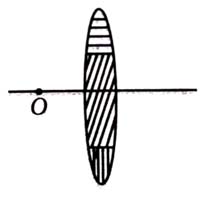

2
1
No image will be formed
3
(4)
Since, the given lens is made up of three different materials so there are three refractive indices, and hence, three images will be formed.
Q 3
:
An object is mounted on a wall. Its image of equal size is to be obtained on a parallel wall with the help of a convex lens placed between these walls. The lens is kept at distance in front of the second wall. The required focal length of the lens will be [2023]
less than
more than but less than
-
-
(3)
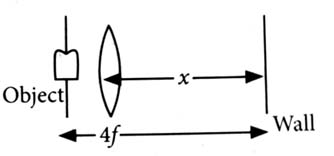
The same size image is formed when object is positioned at centre of curvature. Using geometric configuration, or
Q 4
:
Two thin lenses are of same focal lengths , but one is convex and the other one is concave. When they are placed in contact with each other, the equivalent focal length of the combination will be [2023]
-
infinite
zero
-
(2)
Let the focal length of the convex lens be .
When two lenses are placed in contact with each other, their power will be added.
Hence, will be infinite.
Q 5
:
In the figure shown here, what is the equivalent focal length of the combination of lenses (Assume that all layers are thin)? [2023]
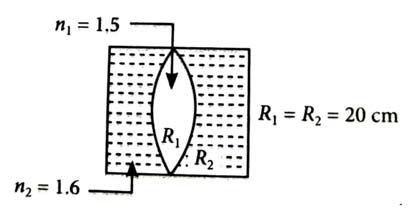

–100 cm
–50 cm
40 cm
–40 cm
(1)
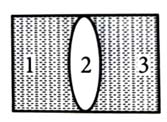
From lens maker's formula,
Q 6
:
A biconvex lens has radii of curvature, 20 cm each. If the refractive index of the material of the lens is 1.5, the power of the lens is [2022]
+2D
+20D
+5D
infinity
(3)
Given, refractive index of lens = 1.5
For biconvex lens,
According to lens maker’s formula,
or
Power of lens (in dioptre),
Q 7
:
A convex lens ‘A’ of focal length 20 cm and a concave lens ‘B’ of focal length 5 cm are kept along the same axis with a distance ‘d’ between them. If a parallel beam of light falling on ‘A’ leaves ‘B’ as a parallel beam, then the distance ‘d’ in cm will be [2021]
30
25
15
50
(3)
Given :
Equivalent focal length,
(As the rays are parallel)
By using Newton’s displacement formula,
Q 8
:
Two similar thin equi-convex lenses, of focal length each, are kept coaxially in contact with each other such that the focal length of the combination is .
When the space between the two lenses is filled with glycerin (which has the same refractive index as that of glass) then the equivalent focal length is . The ratio will be [2019]
3 : 4
2 : 1
1 : 2
2 : 3
(3)
According to lens maker’s formula
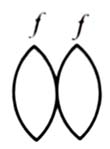
Two similar equi-convex lenses of focal length each are held in contact with each other.
The focal length of the combination is given by
...(i)
For glycerin in between lenses, there are three lenses, one concave and two convex.
Focal length of the concave lens is given by
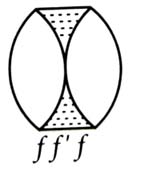
Now, equivalent focal length of the combination is,
...(ii)
Dividing equation (i) by (ii), we get
Q 9
:
An equiconvex lens has power P. It is cut into two symmetrical halves by a plane containing the principal axis. The power of one part will be [2019]
0
-
-
-
(4)
When an equiconvex lens is cut into two symmetrical halves along the principal axis, then there will be no change in focal length of the lens.
So, the power of each part will be
Q 10
:
Two identical glass equiconvex lenses of focal length each are kept in contact. The space between the two lenses is filled with water . The focal length of the combination is [2016]
(4)
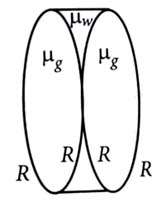
Here,
Focal length of glass convex lens is given by
or ...(i)
Focal length of water filled concave lens is given by
Equivalent focal length of lens system

